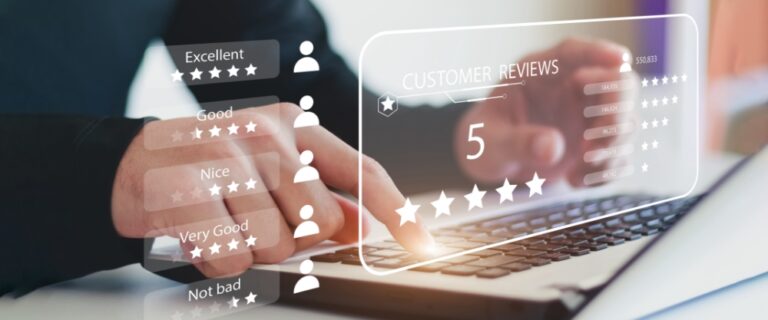3 Ways to Reduce No-Show Rates at Medical Practices
Posted: November 17, 2021 - By Tiffany Beveridge
A “patient no-show” is the healthcare industry term for missed appointments. There are many reasons for no-shows, whether it be anxious patients or inefficient reminders. But their end result is the same — scheduled appointments go unfilled, causing lost time and revenue for the entire doctor’s office.
The National Average No-Show Rate
The national average no-show rate is about 18%, and it represents a major burden on the entire healthcare system. They’re the little leak that can sink big ships when left unattended. This is why you need to attend to them without delay.
To find the average no-show rate for your clinic, just tally up all your scheduled appointments for the last month and count up how many of those were missed appointments. Divide the missed appointments by the number of scheduled appointments, then multiply by 100 to determine your clinic’s no-show rate.
The numbers you get may show you that you’re treading water. But don’t worry — read on to learn how to seal those leaks.
1. Setting Up Reminders for Appointments
Sadly, the first and most basic cause of missed appointments is simple forgetfulness. Many patients often have busy lives, which makes it easy for them to forget their scheduled appointment with you. Don’t take it personally, but do take proactive action to reduce no-shows and get those slots filled up.
Family practices used to make a point of calling their scheduled patients on the day of the appointment. But if you have too many patients, that may not be practical for your clinic. Instead, you can employ an automated system that sends reminder calls and texts to all your patients as a way to reduce no-shows.
Setting Up a System of Reminder Calls for Missed Appointments
Remember that not all your patients are in the habit of becoming no-shows. There’s no need to treat all of them as if they would. Track patient no-show rates and identify those who are more likely than other patients to miss their appointment slots. Single out the ones most likely to become no-shows for extra reminders, perhaps even beginning a few days before their medical appointment. It would be better for your clinic that they cancel the appointment altogether than be a no-show, so be as clear as possible about your expectations.
Don’t be afraid to do a little hand-holding. You can set reminder calls in place a few days before, the day before, the morning of, two hours before, or even one hour before the medical appointment. Believe it or not, many patients will thank you. It won’t just reduce your no-show rates to a minimum — it can also lower any negative emotions your patients might feel about their appointment altogether.
If you still have no-shows after doing this, don’t fret. There are two more things you can do to reduce your no-show rate even more.
Be Proactive — Don’t Wait to Reach Out
Call your no-shows right away with a simple “Sorry we missed you” phone call. The call shouldn’t be accusatory. On the contrary, give no-shows the benefit of the doubt and offer to reschedule their missed appointment. For many patients, this level of diligence and punctuality on your clinic’s part will be enough to take care of the problem.
Be Reactive — Creating a Waiting List for Easy Rescheduling
Making a waiting list gives you more flexibility for dealing with appointments and can help your no-show rate. When someone is a no-show, you can quickly refer to your waiting list and schedule an appointment on short notice. This strategy will both fill the appointment time and help you reduce your long wait times in one fell swoop.
Similarly, once you’ve noticed which of your patients has a habit of contributing to your rate of no-show appointments, you can opt for a blend of appointment reminders and fees to help them to get to the clinic on time.
2. How Cold Feet Can Cause No-Show Appointments — And How to Stop It
Like it or not, many patients simply get cold feet before a scheduled appointment. They might have a certain fear about their condition that can affect your average no-show rate. Perhaps they even have social anxiety. As a primary care physician, it pays to develop professional relationships with your patients. Get to know them by name, send out personalized birthday and holiday messages at appropriate times, and do other similar things.
Your online presence, especially your social media pages, is like a ground zero for reducing no-show patients. Establish your clinic as a thought leader and expert in your health care specialty. Promote your efficient scheduling practices, inform patients about their options for pre-paying appointments, and let them know that you offer discounts for punctuality.
Help Your Patients Care by Showing That You Care
80% of Americans use the internet to search for healthcare information, and 74% of them use social media in particular as a source of moral support and online community. Remember, some anxiety before a health appointment is logical. If they’re sick, you might have to recommend some lifestyle changes that they’re not prepared to make. Running a healthcare practice demands compassion and empathy on your part. You need to be prepared to think in advance about what your patients might be going through emotionally and see what you can do about them. Displaying emotional intelligence in this way will help you against no-show rates.
The most common reason for fear is the unknown. Stock your website and social media pages with empowering and educational content related to your healthcare specialty. Let patients see that their concerns are justified but manageable, especially with early treatment. Whenever a patient schedules a particularly stressful screening, consider sending them a private message containing information about what to expect and what to bring in order to ensure that everything goes smoothly.
3. Become a More Efficient Medical Practice
Raising the overall efficiency of your clinic is another great way to tackle your no-show rates. Tempting as the thought might be, most patients don’t become no-shows just to spite you. They often just don’t know how much missing appointments can affect you. If they knew, they wouldn’t do it. That’s why a little positive reinforcement is key — merely saying “Thank you” for being on time, both in person and as a personalized message after the appointment, can do wonders.
The benefits of positive reinforcement are no small matter. You want to actively reward patients for helping to minimize your no-show rates. Most of them simply don’t realize that this is a big deal for your clinic, so offer them little incentives for assisting you. Perhaps even a tiny discount on their bill — simply for coming to the medical appointment on time — can go a long way toward breaking down emotional barriers and raising patient satisfaction.
Simply Put: Being Punctual and Professional Go Hand-in-Hand
Healthcare providers rarely do enough to show just how necessary punctuality is for them. Your clinic has many patients, and you can’t give everyone the time they deserve if some are either late or no-shows. Right away when they schedule an appointment, make a point of mentioning that they have the option of pre-paying for their appointment. You can even offer a discount for those who do. Giving patients some “skin in the game” right off the bat can reduce no-show rates for your clinic.
It goes both ways, however. Just as no-shows affect your clinic, long wait times affect your patients. You can’t be justified in being frustrated with patients who miss appointments if you miss them yourself. Use effective communication during your appointments with patients. Respect your patient’s time, your own time as a doctor, and that of your other patients waiting to see you. Long wait times have a way of multiplying no-show rates like clockwork.
Putting a Stop to No-Show Appointments
As you can see, there are many reasons patients aren’t able to meet appointments. Instead of being passive, take steps to assess the state of your practice and look for opportunities to improve. There’s plenty you can do to remedy the situation, such as:
- Stepping up your doctor-to-patient communications, especially online.
- Automating your appointment system to send frequent reminders to your habitual no-show patients.
- Reward your most punctual patients and look for other ways to give positive reinforcement when they’re on time.
- Give your no-shows a call right away at the appointment time to let them know you were there.
Though dealing with no-shows can be frustrating, there’s no need to do everything by yourself. WebMD PracticePro is the most complete platform on the market for your patients’ journeys, aiming to improve their experience at every stage of the process. Our automated appointment scheduling system is specifically tailored to reduce no-show rates to a minimum and restore flexible scheduling to your practice. Contact us today to request a demo.


